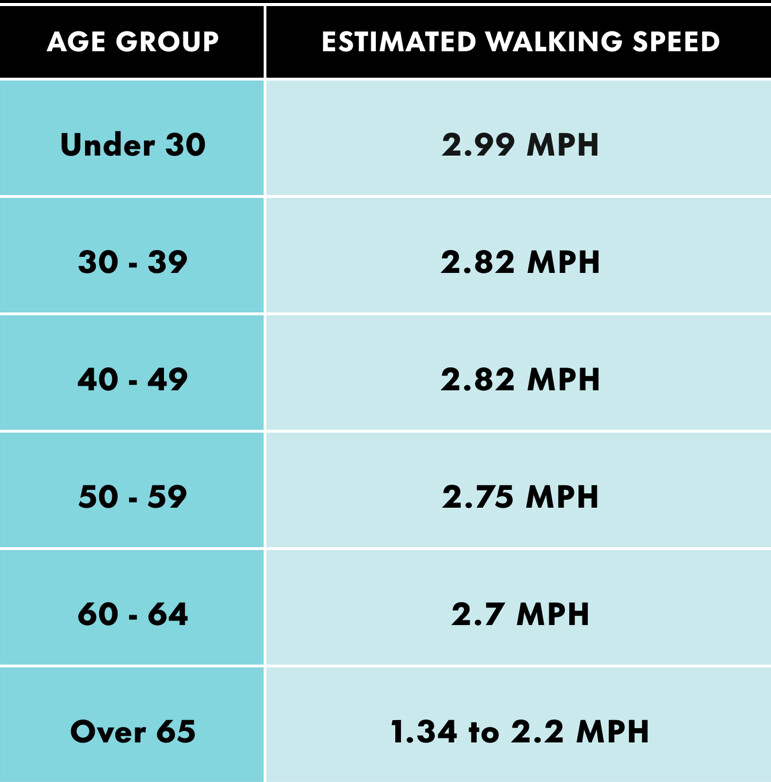Running News Daily
Running News Daily is edited by Bob Anderson in Los Altos California USA and team in Thika Kenya, La Piedad Mexico, Bend Oregon, Chandler Arizona and Monforte da Beira Portugal. Send your news items to bob@mybestruns.com Advertising opportunities available. Train the Kenyan Way at KATA Kenya. (Kenyan Athletics Training Academy) in Thika Kenya. KATA Portugal at Anderson Manor Retreat in central portugal. Learn more about Bob Anderson, MBR publisher and KATA director/owner, take a look at A Long Run the movie covering Bob's 50 race challenge.
Index to Daily Posts · Sign Up For Updates · Run The World Feed
How Long Does It Take the Average Person to Walk 10,000 Steps?
All you need to know about setting aside time to meet this common goal.
Your fitness tracker probably tells you how many steps you take most days. And your device likely sets the goal of 10,000 steps a day or maybe that’s what you’ve entered as your daily step-count target. This number has become the popular goal for many people and for good reason: Moving more throughout the day is good for your body in numerous ways and it supports your mind, too.

In fact, every 1,000 steps a person takes each day lowers their systolic blood pressure (the top number) by about 0.45 points—that’s a good thing, especially for your heart! The more you move, the more likely you are to lower your risk of chronic illness, like cardiovascular disease, and support your mental health.
Now, if you’re wondering how long it takes to walk 10,000 steps so you actually meet this goal, we got you! Here, two exercise physiologists explain how long it typically takes to cover 10,000 steps, depending on your average pace, so you can carve out time for your body and mind to clock more movement.
How long does it take to walk 10,000 steps?
For a person of average height (5-foot-3-inches for women and 5-foot-9-inches for men), a 2,000-step walk is about a mile, according to Laura A. Richardson, Ph.D., a clinical exercise physiologist and clinical associate professor at the University of Michigan School of Kinesiology.
This step count varies depending on the length of someone’s leg and the length of their stride, as well as their cadence. However, say it takes you 2,000 steps to cover one mile, and you walk at an average pace of about 20 minutes per mile, then it would take you about 100 minutes to walk 10,000 steps, Richardson explains Runner’s World. That’s one hour and 40 minutes.
Authors of a 2020 article published in Sustainability reviewed studies that examined walking habits in order to suggest ways to increase activity, and they came to a similar conclusion on timing. They found that healthy older adults typically average 100 steps per minute when moving at a moderate pace. This translates to about 100 minutes to clock 10,000 steps.
This will obviously change depending on your walking pace, though. If you walk a 15
The numbers change, of course, if you run some of those 10,000 steps, explains Rachelle Reed, Ph.D., an exercise physiologist, tells Runner’s World. Based on Strava, the average mile pace for American men is a 9:32 and 10:37 for American women. It would take those men about 47 minutes to take 10,000 steps and the women would need about 53 minutes to do the same.
How many calories do you burn per 10,000 steps?
To figure out how many calories you burn walking 10,000 steps, you need to know the metabolic equivalent rate (MET) for your exact pace. A MET is determined by multiplying the body’s oxygen consumption by bodyweight every minute. One MET is roughly equal to the amount of oxygen you consume at rest and is also equal to one calorie.
Following that equation, the National Academy of Sports Medicine says walking at a less than two miles per hour is equivalent to 2 METs per minute, which means someone who weights 150 pounds burns fewer than 140 calories per hour. Meanwhile, that same person walking at a brisk pace of approximately 3.5 miles per hour is equivalent to 4.5 METs, leading to a calorie burn of about 306 per hour.
Walking at a very brisk pace of four to six miles per hour is roughly equivalent to 5 METs, per the NASM. “It’s five times the amount of energy you need compared to rest,” Reed adds. Thus, you can burn around 340 calories per hour.
To put that in the context of 10,000 steps: Let’s say you walk about three miles per
How can you boost the benefits of your 10,000 steps?
To truly kick up the calorie burn, you have to change the intensity of your movement, which might mean adding in some running, walking at an incline on the treadmill, or walking up a hill, according to Richardson.
Reed suggests adding a weighted vest to your walks (or runs) a.k.a. rucking to increase the intensity level.
Finally, you may wonder if getting those steps on the treadmill is as beneficial as heading outside. There are pros and cons to both. “Pros of a treadmill are it’s easier to manipulate,” Reed says. “You can have complete control over the length of the intervals, the speed, and the incline much more easily there. But there’s also something to be said about getting your physical activity outside. There are additional mental benefits like stress relief and feeling more connected with your environment that people can gain from being active outside.”
Richardson agrees: “The nice thing about being outdoors is the sunlight, the fresh air, the different level terrain, depending on what type of surface someone’s walking on, that can engage different muscles,” she says. “So again, pros and cons to both. Really, choose
(11/02/2024) Views: 197 ⚡AMP



